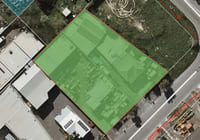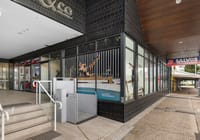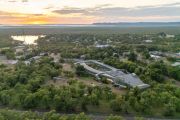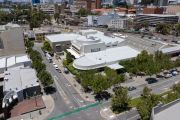
Former Pink Pussy Cat strip club sells for more than $6 million
The former Pink Pussy Cat strip club in Sydney’s Kings Cross has sold under the hammer for $6.15 million, with the new owner likely to follow through with a current development application to transform the property into a mixed-use building consisting of apartments, retail and offices.
The investor beat four other bidders to secure the property at a “socially distanced” auction this week, having only inspected the property for the first time earlier that day.
“They inspected the property at 10.30am and then bought at 12.30pm,” said listing agent Matt Pontey, of Colliers International.
The buyer had recently successfully offloaded another of their assets, which allowed them to “be nimble and move quickly last-minute,” said Mr Pontey’s colleague Miron Solomons.
Some 30 people attended the auction at Cooley Auction Rooms, allowed under loosened social distancing requirements in NSW, with bidding beginning at $3.7 million.
The property, at 38 Darlinghurst Road, was once the Pink Pussy Cat strip club – a longtime fixture of the Cross that was opened in the 1950s by the late “Sir” Wayne Martin and Louis “Last Card” Benedetto.
Mr Martin had connections to Abe Saffron, one of the backers of the club, as well as Frank Sinatra.
The club closed in 2003 and was leased as a medical centre at one stage before becoming vacant in recent years. It was being sold by PGB Pty Ltd, with an approved DA for a mixed-use development.
The new owner is understood to have been attracted to the gentrification of the Kings Cross area as well as the potential of infrastructure projects such as the redevelopment of Central station to drive renewed interest in the city fringe market.
“They likely will take advantage of the approval for the asset which is a mixture of retail and commercial and residential,” Mr Pontey said.
“We were able to articulate the growth taking place in the area and the surrounding city precinct, which is underpinned by significant infrastructure projects. The whole area is benefitting from a concentration of buyers that is unlikely to be seen in many other markets in the country,” Mr Solomons said.
The property received about 145 inquiries during the campaign, with the pandemic seemingly having little effect on investors.
“It wasn’t mentioned at all during the campaign – we adhered to the rules and the regulations and it really did not factor in,” Mr Pontey said.
But the income diversity of the asset would help position it to ride out whatever economic situations arise in the months ahead.
“This asset in particular afforded the buyer a diversity of incomes across office, residential and retail, which is attractive in any market but, in particular now, it is going to help you avoid those sleepless nights,” Mr Solomons said.










